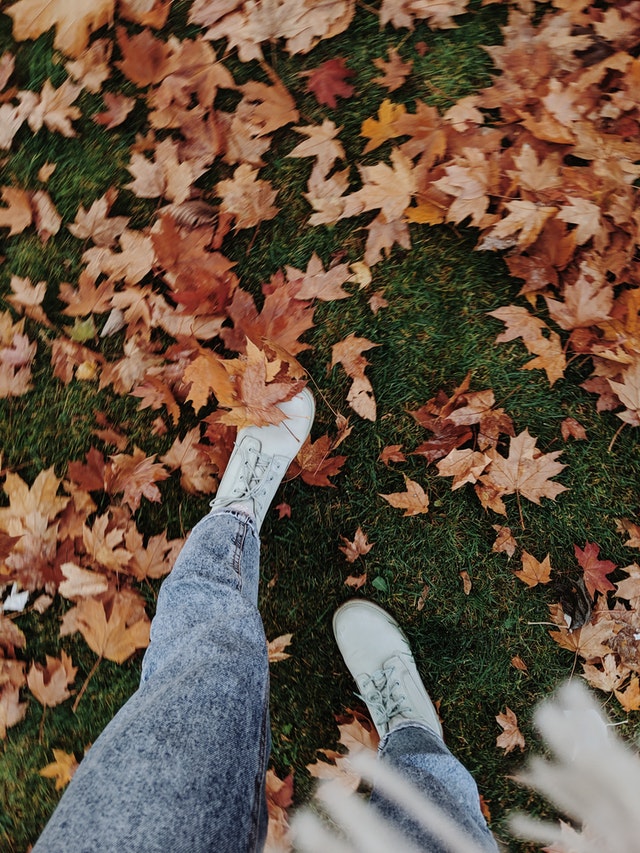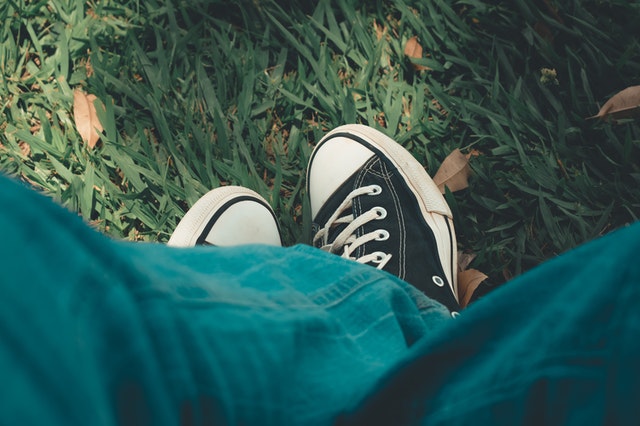Nothing compares to the appearance of a new pair of jeans. They offer a stronger, bolder color than old jeans. New jeans, however, may stain your shoes when worn for the first few times. It’s disheartening when you notice stains on your shoes, but it’s even more frustrating when you discover the problem is associated with your new jeans. You can still wear new jeans in your daily outfits, but you should consider the following tips to prevent them from staining your shoes.
Choose Washed Denim Jeans
While all types of jeans have the ability to stain shoes, those made of dry denim are far more likely to cause this problem. Also known as raw denim, dry denim refers to any denim material that isn’t washed during production. Denim can be classified as either raw or washed, depending on whether or not it’s washed during production. Raw denim isn’t washed, whereas washed denim — as you may have guessed — is washed.
Jeans made of washed denim are less likely to stain your shoes because they’ve already been washed. When denim is washed, it’s submerged in water. Exposure to water will encourage excess dye to rinse out of the denim. The end result is a higher level of protection against bleeding. Your jeans will be less likely to bleed their dye onto your shoes, as well as your other garments, if they are made of washed denim. By choosing a pair of washed denim jeans, you can protect your shoes from stains.
Cuff the Pant Legs
You can prevent your jeans from staining your shoes by cuffing the pant legs. Cuffing refers to the creation of cuffs, which are folded sections of denim. By cuffing the pant legs, your jeans will have a slightly shorter length. Cuffing essentially allows you to make your jeans shorter so that they don’t touch your shoes. And if they don’t touch your jeans, they shouldn’t cause stains.
How do you cuff the pant legs on your jeans exactly? There are a few ways to do it. One of the easiest ways is to perform two or three vertical folds. Each of these folds should be about 1-inch tall. As you perform these vertical folds, your jeans will become shorter. Cuffing will create a tight band around the bottom of the pant legs that secures them in place.
An alternative to cuffing the pant legs is to choose selvedge jeans. Selvedge jeans already have cuffs. When inspecting the pant legs, you’ll notice they have a folded band of fabric. Known as a cuff, it offers a uniquely stylish appearance while simultaneously protecting the jeans from bleeding their dye. Whether you cuff your jeans manually or choose a pair of a selvedge jeans, you won’t have to worry about them staining your shoes.

Avoid Long and Baggy Jeans
The size and cut of your jeans will affect their risk of staining your shoes. Long and baggy jeans, for instance, are more likely to stain your shoes. If your jeans are long and baggy, they’ll probably touch your shoes. Touching your shoes, of course, can lead to stains. Some of the dye within your jeans will transfer onto your shoes, resulting in stains.
You can still choose full-length jeans; just remember to avoid excessively long and baggy jeans that extend past your ankles. Jeans should stop right at or around your ankles. If they extend past your ankles, they may stain your shoes.
For the perfect size that’s not too long or too short, consider ordering a pair of custom-sized jeans. Custom-sized jeans are created your own body measurements. You can order them here at MakeYourOwnJeans. Unlike other clothing stores, you aren’t restricted to choosing jeans in a fixed size. We offer custom-sized jeans that give you the freedom to specify your body measurements. With custom-sized jeans, you can rest assured knowing that they won’t contribute to shoe stains.
Run Them Through the Washing Machine
Don’t forget to run your jeans through the washing machine. Not all jeans will bleed their dye. Rather, it’s usually new jeans that haven’t been washed that experience this problem. If you buy a new pair of jeans and wear them without washing them, they may bleed some of their dye onto your shoes. A simple solution is to run your jeans through the washing machine.
Before wearing your new jeans, run them through the washing machine once or twice. Washing them will release some of their excess dye. At the same time, it will break in your new jeans so that they feel softer and less scratchy.
You can even wash your new jeans with vinegar to further lower the risk of shoe stains. Vinegar is an all-natural color protectant. When added to the washing machine, it will soak into your jeans while “locking” in the dye. Just pour about 1 cup of white distilled vinegar into the washing machine with your jeans. When your jeans come out, they’ll be less likely to bleed their dye onto your shoes.
Choose the Right Shoes
The type of shoes you wear with your jeans can affect their risk of developing stains. Tall shoes, for example, are more likely to develop stains than short shoes. If your shoes are tall, they’ll extend higher up your ankles where they may touch your jeans.
There’s no rule stating that you must wear a specific type of footwear with your jeans. Jeans are versatile in the sense that they can be worn with a variety of types of footwear and other garments. Nonetheless, you should consider choosing short shoes to protect them from stains. If your shoes have a short height, they should be a safe distance away from the bottom of your jeans. The end result is a higher level of protection against stains. Along with the other tips listed here, choosing the right shoes will help to protect them from stains caused by your new jeans.











